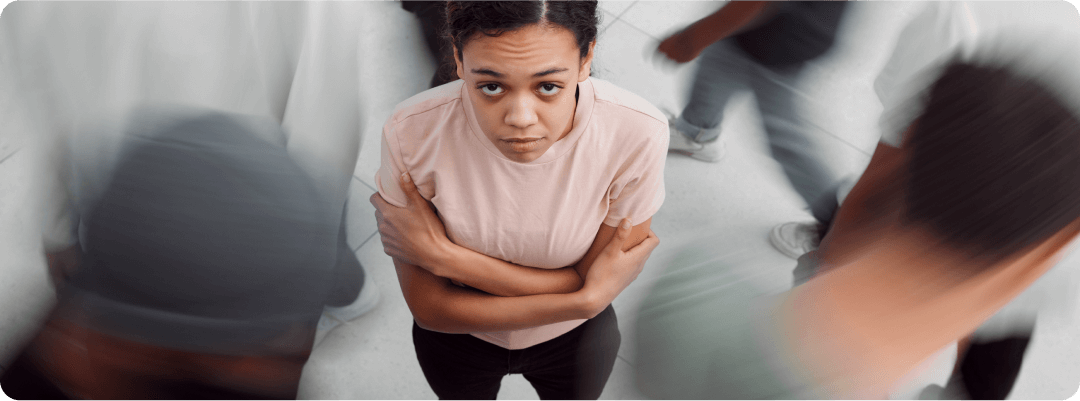
Addiction and substance abuse can be crippling. Substance abuse has the potential to destroy relationships and lives if left untreated. But what many people forget is that addiction also affects the mind. A person’s thinking processes and behaviors are all fuel to the fire. This is where cognitive behavioral therapy for addiction comes in.
Cognitive behavioral therapy (CBT) is one of the most widely used therapy types for addiction. Its main purpose is to change the way a person thinks about their addiction and needs. CBT has been proven to help those struggling with addiction achieve long-term sobriety. Sometimes hitting the root of the issue can make all the difference.
If you or a loved one is struggling with addiction, it may be time to get help. The more you wait, the more you open the door for worse consequences. At Silver Linings, we’re ready to help you on the road to recovery. It is never too late to get help.
What is Cognitive Behavioral Therapy (CBT)?
Cognitive-behavioral therapy is a classification of mental health counseling founded by Dr. Aaron Beck 70 years ago. Since then, CBT has been used to treat a number of different disorders and addiction. CBT works by helping a person accept their situation while changing their feelings, actions, and awareness. This is fundamental to recovering from substance abuse and addiction
CBT has been used to treat a number of mental health illnesses and addictions. CBT has been used to treat co-occurring disorders as well, these include:
- Anxiety
- Bipolar disorder
- Eating disorders
- Attention deficit disorder (ADD)
- Post-traumatic stress disorder (PTSD)
- Obsessive-compulsive disorder (OCD)
Co-occurring disorders occur when someone is struggling with drug addiction and a mental health disorder at the same time. These cases can be very problematic and can cause many issues. These two disorders can begin to feed on each other. During treatment, both of these cases are treated separately.
CBT works for mental illnesses and addiction as well. By changing the way a person thinks of themselves and their addiction, they can begin to change their bad habits. It is not an easy route but it is absolutely necessary for long-term recovery.
How Cognitive Behavioral Therapy Works
Cognitive-behavioral therapy opens a person’s eyes to their harmful actions and emotions. CBT helps pinpoint the reasons for using in the first place. This could be from past experiences or other factors. When someone is abusing drugs, they may fall into automatic thoughts and behaviors.
These behaviors only continue the cycle of addiction. Over time a person will fall heavily into addiction and create a pattern of destructive drug use. Individuals who struggle with addiction tend to have automatic thoughts, which are based on impulsiveness and internalized misconceptions. These emotions and feelings may cause the person to turn to alcohol and drugs for relief.
Certain memories in someone’s past can lead someone straight into addiction. They may continue to revisit these painful memories. CBT seeks to understand these feelings and emotions and helps change a person’s way of thinking. By confronting your own feelings in a positive way, you lose the need to drink.
Cognitive Behavioral Therapy for Addiction
As discussed before, a person’s automotive thoughts (usually negative ones) can be the sole reason for drug abuse. It also typically indicates possible co-occurring disorders in some cases. Depression and anxiety are two common effects seen in alcoholics and addicts.
CBT implements a number of techniques and methods with the purpose of changing a person’s behavior for the better. It can be tough to climb out of the pits of addiction but it is absolutely possible. Cognitive behavioral therapy implements the following ideas during treatment to ensure long-term sobriety:
- Teaches effective skills and techniques of communication
- Helps a person handle certain triggers and cope with stresses
- Provides tools to better moods and improve overall progression
- Helps shed light on insecurities and false ideas (that have led a person towards addiction)
CBT uses a number of useful techniques and personalized training to ensure a change in a person’s thoughts. Sometimes, it’s these repressed thoughts and inaccurate feelings that are the root of the addiction. It’s never too late to get help, let Silver Linings be your guide to a brighter life down the line.
Handling and Managing Triggers with CBT
Triggers can be very dangerous for those in recovery. Triggers are certain things, people, thoughts, or places that may trigger a craving throughout the day. It can be tough to hold back and control your cravings but it is necessary. One of the great things about CBT is that it allows a person to learn how to control their cravings.
There are specific skills and steps used to manage a person’s cravings. If a person is able to follow these closely, relapses can be avoided altogether. The three techniques are recognizing, avoiding, and coping.
- Recognize – Understand and pinpoint all the circumstances that resulted in using drugs/alcohol
- Avoid – Retreat from the trigger situation (when possible or when it’s appropriate)
- Cope – Use CBT skills to confront and ease some of the emotions that lead to substance abuse
One of the most beneficial things about CBT is the fact that addicts can use it outside of treatment. In the outside world, recovering individuals can practice and utilize CBT exercises on their own. These can be very beneficial in remaining clean and having an open, clear mind about your past experiences.

Other Cognitive Behavioral Therapy Techniques
Along with keeping a person’s cravings in line, there are many other techniques used for CBT. Specific exercises that help keep addicts thoughts in line and away from drugs completely. Let’s take a look at some of the pillars of CBT for substance abuse therapy.
Behavioral Experiments
CBT for substance abuse also utilizes certain exercises to contrast negative thoughts with positive thoughts. This technique has been proven to be better for individuals suffering from addiction. Overall, people respond to self-kindness while others may respond more to self-criticism. This stage helps a person find a good balance that works for their situation and addiction.
Thought Records
Examine automatic negative thoughts and attempts to find evidence that disproves those flawed thoughts. By making a list of evidence for and against the automatic thoughts, they can begin to think more clearly. The goal of thought records is to create a more balanced and more effective thought process.
Pleasant Activity Schedule
As the name suggests, this technique allows a person to implement fun, healthy activities into their daily routine. These should be easy and pleasant tasks that encourage positive feelings. These activities help relieve the negative automatic thoughts while getting rid of the need to use drugs, to begin with.
Imagery-Based Exposure
With most cases of addiction, there is often a painful or dark memory or thought that drives a person. Imagery based exposure is an exercise that has an addict think carefully about this painful thought. They will note every sound, emotion, thought, impulse, and sight during the process. Over time, this is repeated until a person begins to feel more at ease with the thought. It may be tough at first but over time, a person’s anxiety can change for the better.
The Difference Between CBT and Other Therapy Options
The truth is, there are many different options for treating substance abuse and addiction. Some treatment options may work better for some while others may not. It is a matter of preference and the case at hand. CBT for substance abuse and addiction is very useful and commonly used throughout rehab centers across the nation.
One of the great features of CBT is the amount of time it takes for results as opposed to the other psychotherapy options. Cognitive behavioral therapy takes around 16 sessions for changes to be seen in the addict. This is not to say that other psychotherapy options like Dialectical behavioral therapy and group therapy aren’t beneficial.
For cases of addiction, it is not uncommon for someone to undergo multiple different types of therapy during the process of treatment. At the end of the day, all that matters if you are working towards getting help. Some treatment options may work better for you but doing nothing is not an option. The mental and psychical effects of addiction can begin to ramp up over time, sometimes becoming fatal in some situations. Don’t wait to get help.
Finding Hope Through CBT for Substance Abuse
If you or a loved one is struggling with substance abuse or addiction, Silver Linings may be able to help. We offer a number of effective treatment options including cognitive behavioral therapy for addiction. Don’t wait to get help, let us get you to a better place today. Contact us to learn more about our treatment options and addiction resources.